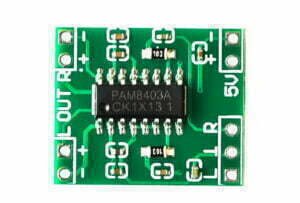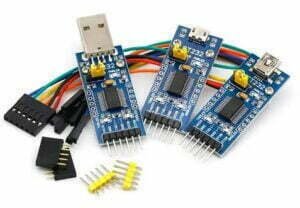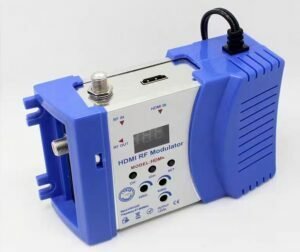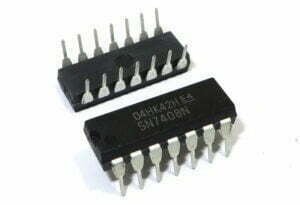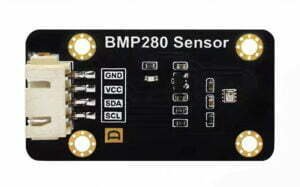Introduction
In an era where electronic devices are shrinking in size yet growing in complexity, the reliability of Printed Circuit Boards (PCBs) has never been more critical. As components become denser and operational environments more harsh, PCB coating—a protective layer applied to PCBs—has emerged as a cornerstone of modern electronics manufacturing. This blog delves into the technical nuances, industry applications, and emerging trends of PCB coating, addressing key gaps in existing knowledge to empower engineers, manufacturers, and tech enthusiasts alike.
What is PCB Coating?
PCB coating, also known as conformal coating, is a thin, protective film applied to PCBs to shield them from environmental threats like moisture, dust, chemicals, temperature fluctuations, and mechanical stress. This layer, typically 25–100μm thick, acts as a barrier, preserving electrical integrity, enhancing mechanical strength, and extending the lifespan of electronic assemblies. Common types include acrylic, polyurethane, silicone, and parylene, each tailored to specific needs.
Selecting the Right Coating for Your Application
One of the most critical decisions in PCB protection is choosing the appropriate coating. While generic guides exist, industry-specific requirements demand tailored solutions:
Automotive Electronics
- Challenge: High temperatures (up to 150°C), vibration, and exposure to oils and road salts.
- Solution: Silicone or polyurethane coatings, which offer excellent thermal stability and resistance to automotive fluids. For under-the-hood components, flame-retardant formulations (meeting UL 94V-0) are essential.
Aerospace & Defense
- Challenge: Extreme temperature swings (-50°C to 200°C), radiation, and high-altitude pressure changes.
- Solution: Parylene coatings, known for their ultra-thin, uniform coverage and ability to withstand harsh conditions. IPC-CC-830 Class 3 standards are mandatory here, ensuring long-term reliability in mission-critical systems.
Medical Devices
- Challenge: Biocompatibility, sterilization requirements (e.g., autoclaving), and resistance to disinfectants.
- Solution: Silicone or epoxy coatings that are non-toxic and pass biocompatibility tests (ISO 10993). Avoid solvents that may leach harmful substances.
Marine & Industrial Equipment
- Challenge: High humidity, salt spray, and corrosive chemicals.
- Solution: Epoxy or polyurethane coatings with high moisture and chemical resistance. Salt spray testing (ASTM B117) is crucial to validate performance.
- Environment: Assess temperature, humidity, chemicals, and mechanical stress.
- Electrical Needs: Dielectric strength (kV/mm) and insulation resistance (Ω) for high-voltage applications.
- Process Compatibility: Ensure the coating cures properly with your manufacturing methods (e.g., UV-curing for rapid production).
Testing Standards for Long-Term Reliability
While standards like IPC-CC-830 and UL 746E are mentioned in industry literature, understanding their specifics is vital for compliance and performance:
IPC-CC-830B
- Physical Properties: Thickness (30–100μm), hardness, and adhesion (ASTM D3359).
- Environmental Testing:
- Humidity Resistance: 85°C/85% RH for 1,000 hours (JESD22-A101).
- Temperature Cycling: -40°C to 85°C for 100 cycles, checking for cracks or delamination.
- Salt Spray: 5% NaCl solution for 24–48 hours to simulate coastal or marine environments.
UL 746E
Electrical Testing
- Dielectric Strength: Measures resistance to electrical breakdown (e.g., 20 kV/mm for acrylic coatings).
- Insulation Resistance: Ensures minimal leakage current, critical for high-precision devices like medical sensors.
Rework and Repair: Restoring Coated PCBs
Reworking coated PCBs requires finesse to avoid damaging surrounding components:
Removal Techniques
- Mechanical Methods: Gently scrape coatings with anti-static tools (e.g., plastic scalpels) for small areas.
- Chemical Methods: Use solvent baths (e.g., acetone for acrylics, xylene for epoxies) to soften coatings, followed by ultrasonic cleaning.
- Thermal Methods: Apply low heat (≤80°C) to loosen cured films, ideal for delicate components.
Reapplication Best Practices
- Clean the Area: Remove flux residues and contaminants with isopropyl alcohol.
- Prime the Surface: Use adhesion promoters if the original coating was silicone-based, which often requires a primer.
- Apply Compatible Coating: Ensure the repair coating matches the original in chemical and thermal properties to avoid delamination.
Cost-Benefit Analysis: Balancing Protection and Budget
While parylene offers superior performance, it’s 3–5x more expensive than acrylic. Here’s a breakdown of trade-offs:
Table 1: Coating Types and Cost-Benefit Comparison
| Coating Type | Cost (per liter) | Key Advantages | Best for |
|---|---|---|---|
| Acrylic | $50–$100 | Fast drying, low cost | Consumer electronics, low-risk environments |
| Polyurethane | $80–$150 | Excellent abrasion resistance | Industrial controls, automotive interiors |
| Silicone | $120–$200 | High thermal stability, flexibility | High-temperature applications (e.g., under-the-hood) |
| Parylene | $500–$1,000 | Ultra-thin, hermetic seal | Aerospace, medical implants |
Application Methods:
- Dipping: Low cost, high material waste (suitable for simple PCBs).
- Spraying: Precise, moderate cost (ideal for complex layouts, like SMT boards).
- Selective Coating: Minimal waste, high upfront cost (for high-volume, high-reliability products).
Environmental and Health Considerations
Sustainability and safety are no longer optional:
Health Precautions
- Respiratory Protection: Use N95 masks or fume hoods when handling solvent-based coatings, which may cause irritation or long-term lung damage.
- Skin Contact: Wear nitrile gloves; some epoxies can cause allergic reactions with prolonged exposure.
Environmental Impact
- VOC Emissions: Solvent-based coatings release volatile organic compounds, prompting regulations like the EU’s REACH. Water-based or UV-curable coatings are greener alternatives.
- Waste Management: Dispose of unused coatings and cleaning solvents via certified hazardous waste handlers to avoid soil/water pollution.
Manufacturers are increasingly adopting low-VOC, RoHS-compliant coatings to meet global environmental standards and protect worker health.
Troubleshooting Common Defects with Visual Guidance
While bubbles, cracks, and delamination are frequently mentioned, detailed diagnostics are key:
Bubbles
- Cause: Trapped solvents during curing, high viscosity, or rapid heating.
- Solution: Optimize cure profiles (e.g., gradual heating to 80°C over 10 minutes) and thin coating layers (≤50μm).
Cracks
- Cause: Thermal stress from uneven expansion, thick coatings, or residual flux.
- Solution: Ensure proper cleaning before coating and limit film thickness to 30–80μm.
Delamination
- Cause: Poor surface preparation (e.g., finger oils, dust) or incompatible coatings.
- Solution: Test surface energy with a dyne pen (≥38 dynes/cm) and prime surfaces for silicone coatings.
Including high-resolution images of these defects (e.g., a cross-section of a delaminated coating) can help engineers quickly identify and address issues.
Emerging Trends in PCB Coating Technology
The field is evolving with innovations that address modern challenges:
Nano-Coatings
Ultra-thin (10–20nm) layers like graphene-based coatings offer superior thermal conductivity and water repellency, ideal for high-power devices like EV chargers.
Self-Healing Coatings
Microcapsules containing repair agents release when the coating is damaged, autonomously sealing small cracks. Still in R&D, but promising for aerospace and marine applications.
Thermally Conductive Coatings
Silicone-based formulations with ceramic fillers improve heat dissipation, critical for 5G modules and AI chips generating high thermal loads.
Eco-Friendly Formulations
Bio-based resins derived from plant oils are gaining traction, offering biodegradability without compromising performance.

